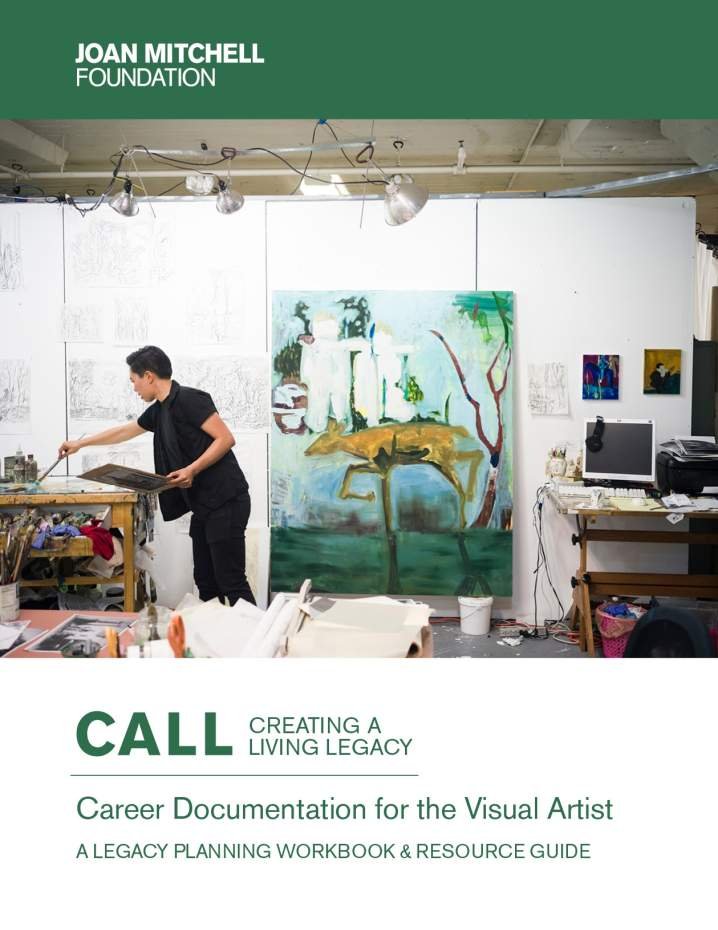A Love Note from the Other Side for the Joan Mitchell Foundation CALL Guide
An closing essay for the Joan Mitchell Foundation’s Creating A Living Legacy (CALL) Initiative
Fall 2022
[Free downloadable PDF]
[Printed Workbook]
[Audiobook]
[Audio of my essay]
Created under the vision and care of Shervone Neckles-Ortiz and Kay Takeda, Career Documentation for the Visual Artist is a free educational workbook focused on legacy planning for artists. It features a range of perspectives in the artist legacy and archiving field, and covers topics such as setting priorities and goals, creating a support system, budgeting for your inventory practice, mapping your archival legacy, creating an artwork inventory, managing digital image assets, creating a bibliography, drafting a preservation plan, capturing your career map and timeline, and more practical advice for documenting your career as an artist.
The guide is part of the Joan Mitchell Foundation’s Creating a Living Legacy (CALL) initiative, which has supported artists in their efforts to catalogue, manage, and preserve their life’s work for over 15 years.
Contributors include Virginia Allison-Reinhardt, Luke Blackadar, Rose Candela, Catherine Czacki, Jim Grace, Margaret Graham, Deidre Hamlar, Tempestt Hazel, Elaine Grogan Luttrull, LaStarsha McGarity, Sharon Mizota, Jennifer Patiño, Steven G. Fullwood, Antonia A. Perez, Paul Mpagi Sepuya, and Jan Wurm.
from the essay “A Love Note from the Other Side”:
“First, allow me to introduce myself. I am one of the people waiting lovingly on the other side of this process of organizing your life’s work and creating your archive. I am someone who might be digging through your files and folders years from now in order to write essays, curate shows, and draw links between your work, your words, and those of other artists or related periods in history. I’ll be the person falling in love with your letters, sketchbooks, and the illegible notes written in the margins of your papers. I am the person who is going to want to do right by you and your work while quoting your words in the most authentic and aligned context. I will bring up your name in studio visits and during panel discussions while pulling up installation views of past exhibitions for interested audiences. I will seek out the parts of your story and your work that have yet to make it into books, shows, and essays. I am one of the potential future explorers of the material portrait you will create for yourself.
Maybe you’re like me in that when you read this Guide you feel a slight weight lift from your shoulders, removed simply by knowing that you have been handed a blueprint from which to build and that you are not alone in this process. But while one weight is lifted, others may still linger because archiving isn’t solely the process of organizing. As several of the contributors to this Guide have stated, it is also a highly personal and intimate practice of reflection. It is an act of love and an expression of self-worth, and often articulates community love and value. Therefore, it is also a space of vulnerability.”



